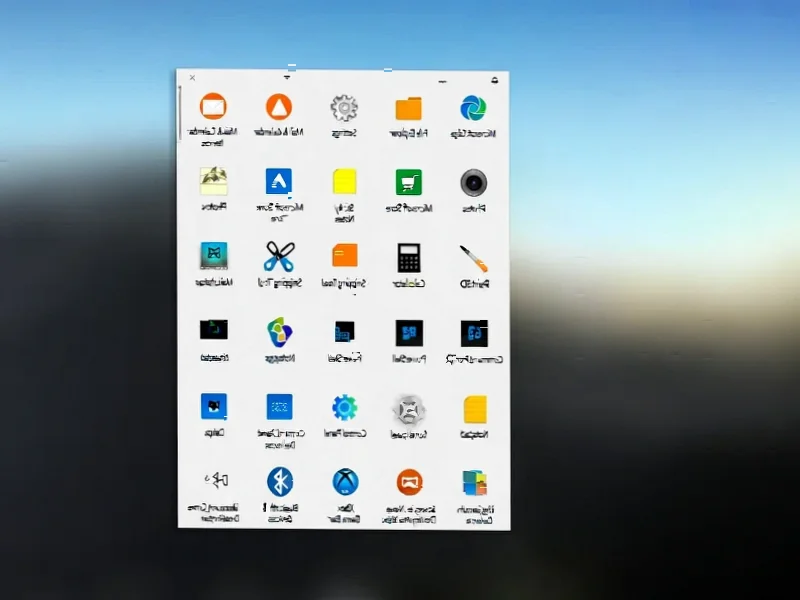According to PCWorld, a significant bug in Windows 11 is causing some users to experience a red color cast on games and videos after installing the optional KB5064081 update released in August. Microsoft has confirmed the issue affects “some videos and games” and has released a fix through the newer KB5067036 optional update, which also includes a redesigned Start menu and addresses other problems. However, the fix itself introduces new bugs, including Task Manager failing to close properly, and Microsoft won’t fully resolve the red cast issue for all users until the November 2025 Patch Tuesday. Microsoft also confirmed another bug where only parts of the screen update when full-screen apps run in the background, causing scrolling issues and partial unresponsiveness. These cascading problems highlight ongoing quality concerns in Microsoft’s update process.
The Systemic Quality Control Failure
What’s most concerning about this situation isn’t the specific red screen bug itself, but the pattern it reveals in Microsoft’s quality assurance processes. The fact that an optional update containing such a visually obvious and disruptive bug made it through testing suggests either inadequate testing protocols or a rushed release schedule. This isn’t an isolated incident – Windows 11 has faced numerous quality issues since its launch, from performance degradation to compatibility problems with critical software. The compounding nature of these issues, where fixes introduce new problems, indicates deeper architectural weaknesses in how Microsoft manages its update ecosystem.
The Hidden Business Productivity Impact
While Microsoft describes the issue as affecting “some videos and games,” the reality is far more disruptive for professional users. Creative professionals working with color-critical applications like Adobe Photoshop, Premiere Pro, or DaVinci Resolve could face disastrous consequences from inaccurate color rendering. Designers, video editors, and photographers rely on precise color accuracy for their work, and a system-wide color cast could lead to incorrect client deliverables, wasted production time, and costly revisions. The partial screen rendering bug affecting browsers and applications creates additional productivity drains, forcing users to constantly restart applications or reboot their systems to resolve display issues.
Flawed Update Strategy and User Trust Erosion
Microsoft’s current approach to Windows updates creates a no-win situation for users. The optional nature of these updates means many users will encounter these bugs unexpectedly, while the mandatory nature of future patches forces everyone to eventually adopt potentially problematic code. This creates what I call “update anxiety” – users increasingly fear installing Windows updates because of the potential for breaking critical functionality. The situation is exacerbated by Microsoft’s Windows Insider program apparently failing to catch these obvious visual bugs before public release. When users can’t trust their operating system to maintain basic display functionality, it undermines the fundamental reliability expectations for enterprise and consumer computing platforms alike.
Long-Term Implications for Microsoft’s Ecosystem
These recurring quality issues come at a critical time for Microsoft, as the company pushes Windows 11 adoption and prepares for future AI-integrated features. The pattern of buggy updates could slow enterprise migration to Windows 11, particularly in industries where system stability is paramount. It also creates opportunities for competitors in the gaming and creative professional spaces, where users might consider alternative platforms if Windows continues to demonstrate unreliable performance. Microsoft’s hardware requirements for Windows 11 were supposed to ensure better stability through modern hardware, but these software-level quality issues demonstrate that advanced hardware alone cannot compensate for inadequate software validation processes.
Practical Recommendations for Users
Given the current instability in Windows updates, users should adopt more cautious update practices. Delay installing optional updates unless they address specific security concerns affecting your workflow. Maintain system restore points before major updates and consider using enterprise-grade update management tools even for personal systems. For creative professionals, implementing color calibration workflows and maintaining backup systems becomes increasingly important. The reality is that until Microsoft demonstrates consistent improvement in update quality, users must take responsibility for protecting their own productivity against Microsoft’s quality control failures.




